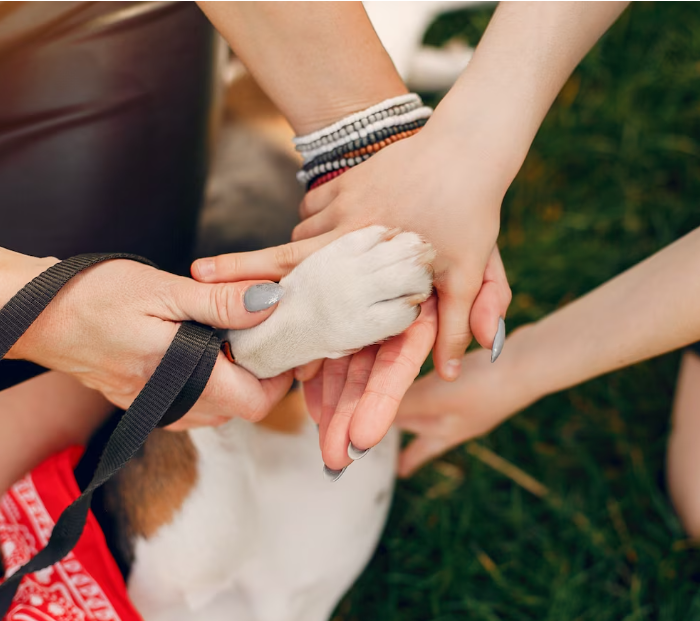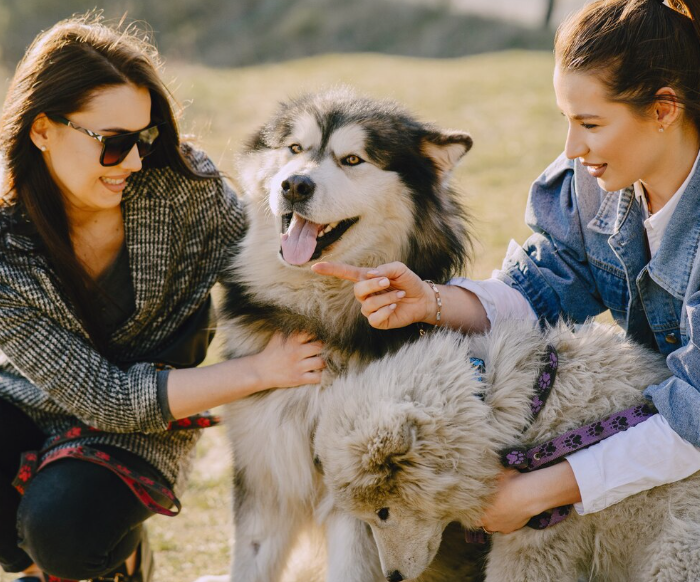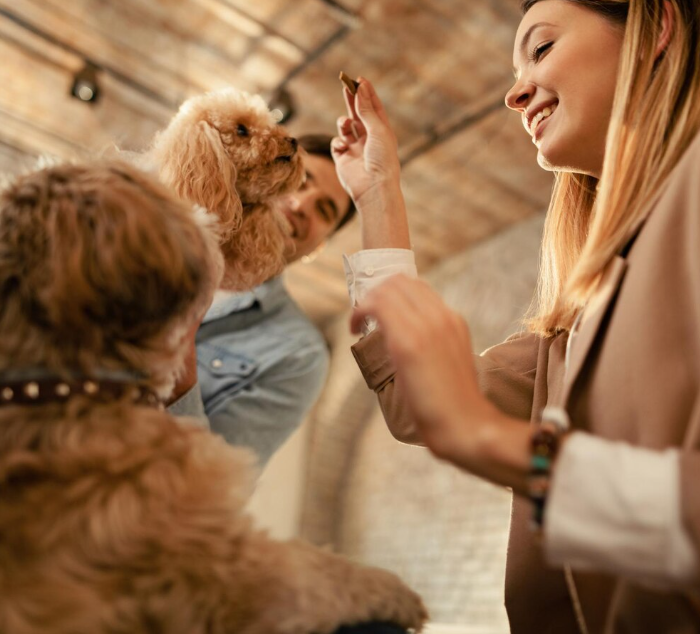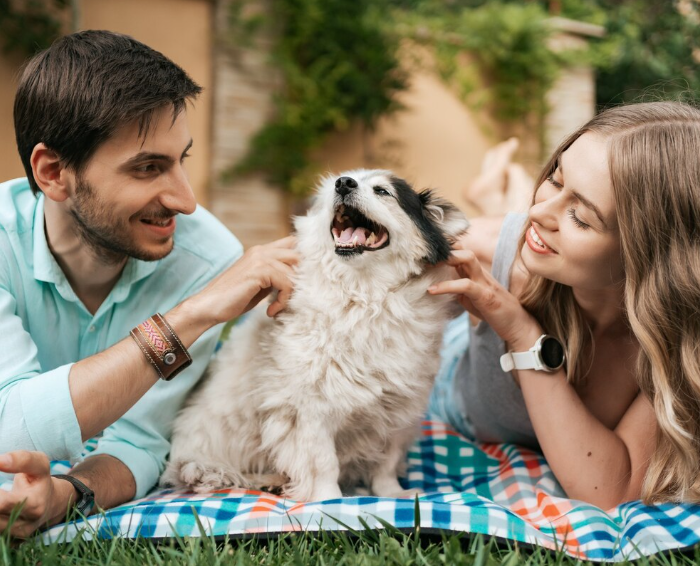2024-02-19
Opening your heart to a paw companion is one of the most rewarding experiences you can have!
Our dogs are our family members who just like our children and other relatives rely on us to learn how to behave, navigate their surroundings, and be aware of what their boundaries are.
Having said that, you may have already realized that in order to accomplish that, we need to invest a lot of time and put effort into properly raising our canines.
Socialization is an essential aspect of the general process of raising a dog, as it helps create a well-adjusted, confident, and happy dog, who knows how to behave around other animals and people. Proper socialization is beneficial for both the dog and their owner, as it contributes to developing a mutual understanding, and a stronger bond between them.
Also, it implies that the owner and the dog will be exposed to different situations together, which will help them learn how to navigate their surroundings better as a team.
Since socialization enhances the relationship of our dogs with the world around them and is crucial for their overall well-being, we will pay special attention to it. In today’s article, we will give you helpful tips on how to socialize your dog.
Socializing your dog involves exposing them to various people, animals, environments, and situations from a young age. This process helps them develop essential social skills and confidence, preventing them from developing behavioral issues in the future.
Dogs that lack proper socialization might display unwanted behaviors such as anxiety, fear, and even aggression when exposed to intensive stimuli. By introducing them to a diverse range of experiences, you're setting the foundation of building a well-behaved, happy, and confident dog, who is able to control their impulses.
Basically, you should start socializing your pup the moment they enter your home. The younger a dog is, the easier they acquire new skills and develop behaviors.
As you may already know it is much easier to teach a dog a new behavior instead of correcting a behavior that has already been developed.
We need to make an important clarification here, in order to avoid any confusion in you. Pups should not be separated from their mothers until they reach the age of 8 weeks. This means that your pup should be at least 8 weeks old when you bring them home.
Of course, the process begins with the basics, and you will need to be extremely patient and understanding, especially when your cute paw friend may try to destroy your furniture, pillows, clothes, shoes, and other items at home they may perceive as worth chewing. Also, do not forget that you should be also prepared for incidents at home, as it usually takes between 4 and 6 months for dogs to be fully housebroken.

The earlier you start socializing your dog, the better! Dogs are more receptive to new experiences when they are young (also valid for humans), which is why you should expose your paw friend to positive interactions with other dogs, people, and environments as early as possible.
However, please keep in mind that your paw friend should be fully vaccinated before interacting with people and animals outdoors. We would highly recommend that you should consult with your dog’s veterinarian to schedule their vaccination. Don’t hesitate to ask any questions you have about your pup’s vaccines, including how oft they should be administered and when your paw friend is ready to explore the outside world.
It is advisable that you introduce your dog to different scenarios, people, and animals gradually, by using positive reinforcement techniques. Although food is considered a primary positive reinforcement tool and is typically the most effective one, praise, and affection as secondary tools should not be neglected too. Your paw friend will definitely appreciate your attention and encouraging voice!
Pairing positive reinforcement with socialization simply means rewarding your paw friend and praising them when interacting with unfamiliar people or animals or exploring new places. This will help create a positive attitude in your paw friend towards the outside world.
Take it slow and don't overwhelm your dog. You should increase the level of challenges step by step and ensure that they feel comfortable prior to moving to the next challenge. Pushing too hard can have negative results and make your dog fearful and distressed instead of happy, inquisitive, and confident.
We would recommend that you expose your paw friend to diverse environments, by starting with your home and family members, and gradually moving to a bit busier areas like your backyard, local parks, streets, markets, and vehicles.
Having said that, some dogs may feel anxious to ride in a car, which requires us as responsible owners to take proper action. For instance, you can take your dog for a short ride, secure them properly on the back seat and ask a family member or friend to reward them with treats if they remain calm while you are driving. It can also be the opposite-you can sit next to your paw friend and reward them while someone is driving.
The general idea is for your canine to start pairing “riding in a car” with a positive experience. If you notice they become anxious and look distressed, end the session, wait for them to calm down, and take them for another car ride, but this time a shorter one. Adapt the duration to your dog’s responses and reactions.
Controlled Interactions
Exposing your paw friend to controlled interactions with other dogs and people is crucial for positive socialization. Choose dogs who are well-mannered, and have a friendly and calm demeanor for initial introductions. It is recommended to choose controlled interactions in the local park or during supervised walks.
Similarly, you should ensure that human interactions are gentle and positive to build trust and prevent your canine from creating any negative associations. It is recommended that you start socializing your dog with the other members of the household first, then introduce them to your friends, and after that meet them with other people.
You may want to arrange interactions with individuals of different ages, races, and sexes, so your dog gets used to being around all types of people without being anxious. The same applies to socialization with individuals having various physical appearances such as people wearing glasses, people with short and long hairs, men with beards, etc.

Walks are an excellent opportunity for your dog to encounter new people and dogs. Therefore, leash training is essential to ensure your beloved furry friend will remain calm and controlled during these interactions. Dogs who pull or lunge on the leash can create tension and anxiety, making socialization more challenging.
To make leash training more appealing to your dog, start by gradually introducing the leash. At the beginning of the process, you should reward and encourage any interest your dog has in the leash, even if that means just sniffing around or looking at it. Continue with very short indoor walks on a leash, and do not forget to praise your canine and give them treats if they walk calmly.
Based on your dog’s performance, you may be able to quickly transition into the outdoor area or practice a bit longer until they feel comfortable. Being patient is crucial for proper training and socialization, which is why you should not think of the end result and compare your dog with other canines. Dogs learn at their own pace, so give your cute pal time to adapt.
Engaging your dog in enrichment activities that simulate real-world scenarios, will be very rewarding for their social and problem-solving skills. It will also boost their confidence and improve their agility.
Talking about environmental enrichment, we mean all types of interesting interactive toys and games your dog can play while home alone or when together with you. Puzzles, treat-dispensing toys, ball launchers, tug toys, obstacle games...there is a wide range of toys on the market, not to mention that you can use your creativity to create fun and enrichment activities for your canine.
Dogs encounter a wide range of sounds in their daily lives, which vary from traffic noise, and different types of alarms, to doorbells, and different sounds that people make when talking and expressing their emotions.
You may want to expose your dog to various sounds gradually. For this purpose you can use videos and recordings to introduce these sounds step by step in a controlled environment. If you notice that your dog is triggered by a certain sound, you may consider applying desensitization and counter-conditioning.
These are two very powerful tools, so to say when it comes to mitigating the effect that stimuli have on your dog’s behavior and emotional state.
Desensitization is related to the gradual exposure of the dog to stimuli that trigger anxiety or fear. This should be done in a controlled manner, by always starting at a very low intensity and cautiously increasing it.
For instance, if your dog is nervous around cars, bicycles, or other types of vehicles, you should start by showing them a stationary car/bicycle/another type of vehicle from a distance and decreasing the distance over time. Also, you should play the sound of a moving vehicle at a very low volume and increase it slowly with a few levels after each session.
Counter-conditioning involves pairing the stimuli with positive experiences. Treats, toys, and praise can help create positive associations and reduce anxiety. This means that you should reward your dog when the stimuli are present, and they managed to remain calm and relaxed.
By applying both training methods together, you will ensure that their effect will increase and help achieve the wanted results more easily, namely for your paw friend to become less sensitive to factors in their environment that would trigger them negatively.
You should never forget these three words when working on your paw friend's socialization or teaching them new tasks. If you lose your nerves or just give up because you do not see any results in a very short time, remember that there is a better thing to do! Continue practicing, remain patient and loving, and repeat as many times as needed until you make sure that your beloved buddy feels more and more comfortable and confident in unknown environments.
If you have to take a step back to work on a certain aspect of socialization, do it! Don’t be afraid to make a mistake or to slow down the pace, if you need to do so. It is the process and not the final results that you should think of.

One of the main positive effects that proper dog socialization has is decreased anxiety in new environments. Simply put, your dog won’t be so reactive, fearful, or anxious when around unknown people, and animals or when visiting a new place. Their emotional state will improve, and they will learn that they are capable of handling new situations with confidence!
Once your dog gets used to being faced with different types of situations, and their negative response towards the stimuli decreases, logically, the wanted types of behavior will increase. You will have it much easier to interact with your dog both at home and in public (especially in public) and manage their behavior.
After you have socialized your dog, you can take a deep breath and stop thinking of how your dog will react to the presence of other dogs or people. Is your paw friend going to jump on your guests or random passersby and dogs or even bite them?
Well-socialized dogs are less likely to show aggression toward other animals and people. Hence, with proper socialization, you help create safer and more pleasant interactions between your paw friend and other members of society.
Last, but not least, socializing your dog is a process that requires your complete determination and involvement. By spending time with your canine companion, you enhance your relationship and become more attuned to each other.
If you consider training your dog in basic obedience or more advanced service dog training, proper socialization at the early stage of training will help you tremendously. It is of course absolutely mandatory for all dogs who are trained as companion animals or service dogs.
Remember that every dog is unique, and their comfort zones and progress rates may vary. Do not rush the process, but adapt your approach based on your dog's individual needs and personality.
With dedication, time, consistency, and patience, you can help your dog become a confident and well-mannered companion, ready to take explore the world with joy and with free spirit!